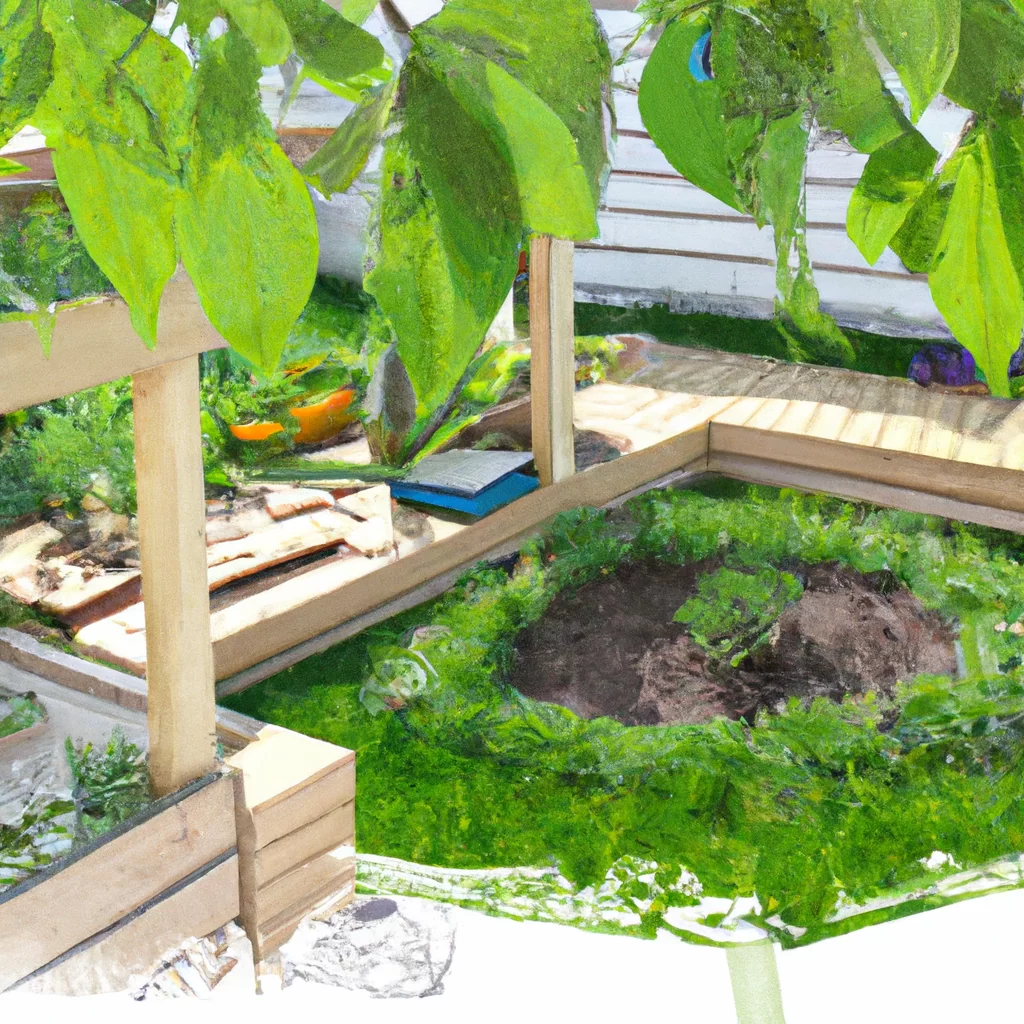How to design a permaculture garden?


How to design a permaculture garden?
Permaculture Garden Design: A Guide to Sustainable Gardening Techniques
Are you interested in creating a permaculture garden but not sure where to start? Permaculture is a sustainable approach to gardening that focuses on cultivating a diverse and self-sustaining ecosystem. By integrating organic gardening, companion planting, edible landscapes, soil fertility, water conservation, biodiversity, natural pest control, and other sustainable gardening techniques, you can design a beautiful and resilient garden that provides food, habitat, and beauty for years to come.
Here’s a step-by-step guide to designing your own permaculture garden:
1. Assess Your Site
The first step in designing a permaculture garden is to assess your site’s natural features, such as sunlight, soil quality, water availability, wind patterns, and existing vegetation. This will help you determine which plants and design elements will work best in your garden and how to optimize your garden’s performance.
2. Design Your Garden Zones
Permaculture gardens are typically divided into zones based on their proximity to your home and the frequency of use. Zone 1 is the area closest to your home that requires the most attention and is typically reserved for high-value crops, such as herbs, vegetables, and fruits. Zone 2 is the area that receives moderate attention and is used for perennial crops, such as fruit trees, berries, and vines. Zone 3 is the area that receives minimal attention and is used for annual crops, such as grains, legumes, and cover crops. Zone 4 is the area reserved for wild and natural habitats, such as forests, meadows, and wetlands. Zone 5 is the area of the garden that is left completely wild and untouched.
3. Plan Your Garden Elements
Once you have determined your garden zones, it’s time to plan your garden elements, such as pathways, water features, compost bins, raised beds, trellises, and other structures. These elements should be designed to maximize your garden’s functionality, beauty, and sustainability.
4. Choose Your Plants
The key to a successful permaculture garden is to choose plants that are adapted to your site’s natural conditions and that complement each other in terms of growth habits, nutrient needs, and pest resistance. Companion planting is a popular technique in permaculture gardening that involves planting two or more plants together that benefit each other in some way, such as repelling pests, improving soil fertility, or providing shade.
5. Build Your Soil
Healthy soil is the foundation of a successful permaculture garden. To build healthy soil, you need to add organic matter, such as compost, manure, or cover crops, that provides nutrients, improves water retention, and promotes soil life. You can also use techniques like sheet mulching, no-till gardening, and crop rotation to improve soil health and fertility.
6. Conserve Water
Water is a precious resource in many areas, so it’s important to use it wisely in your permaculture garden. Techniques like rainwater harvesting, drip irrigation, mulching, and choosing drought-tolerant plants can help you conserve water and reduce your garden’s environmental footprint.
7. Promote Biodiversity
Biodiversity is essential for a healthy and resilient permaculture garden. By planting a variety of crops, trees, shrubs, and flowers, you can create a diverse and self-sustaining ecosystem that supports beneficial insects, birds, and other wildlife.
8. Control Pests Naturally
Pest control is a common challenge in any garden, but in a permaculture garden, it’s important to use natural and sustainable methods to avoid harming beneficial insects and other wildlife. Techniques like crop rotation, companion planting, physical barriers, and natural predators can help you control pests without using harmful chemicals.
In conclusion, designing a permaculture garden requires careful planning, attention to detail, and a commitment to sustainable gardening techniques. By following these steps and integrating organic gardening, companion planting, edible landscapes, soil fertility, water conservation, biodiversity, natural pest control, and other sustainable gardening practices, you can create a beautiful and resilient garden that provides food, habitat, and beauty for years to come.
Recent Posts
How do I create an engaging and informative online quiz or assessment?
Creating an engaging and informative online quiz or assessment can be a powerful tool for… Read More
What are the most effective methods for managing and reducing work-related stress in the hospitality industry?
Work-related stress is a common issue in the hospitality industry, where employees often face long… Read More
How can I improve my assertiveness and communication skills in a leadership position?
In a leadership position, assertiveness and effective communication skills are crucial for success. Being able… Read More
What are the key elements of a successful employee recognition and rewards program?
Employee recognition and rewards programs play a crucial role in motivating and engaging employees, as… Read More
How do I effectively manage and respond to customer feedback and reviews?
Customer feedback and online reviews play a crucial role in shaping a company's reputation and… Read More
What are the best strategies for effective time management as a stay-at-home parent?
Effective time management is crucial for stay-at-home parents who juggle multiple responsibilities on a daily… Read More